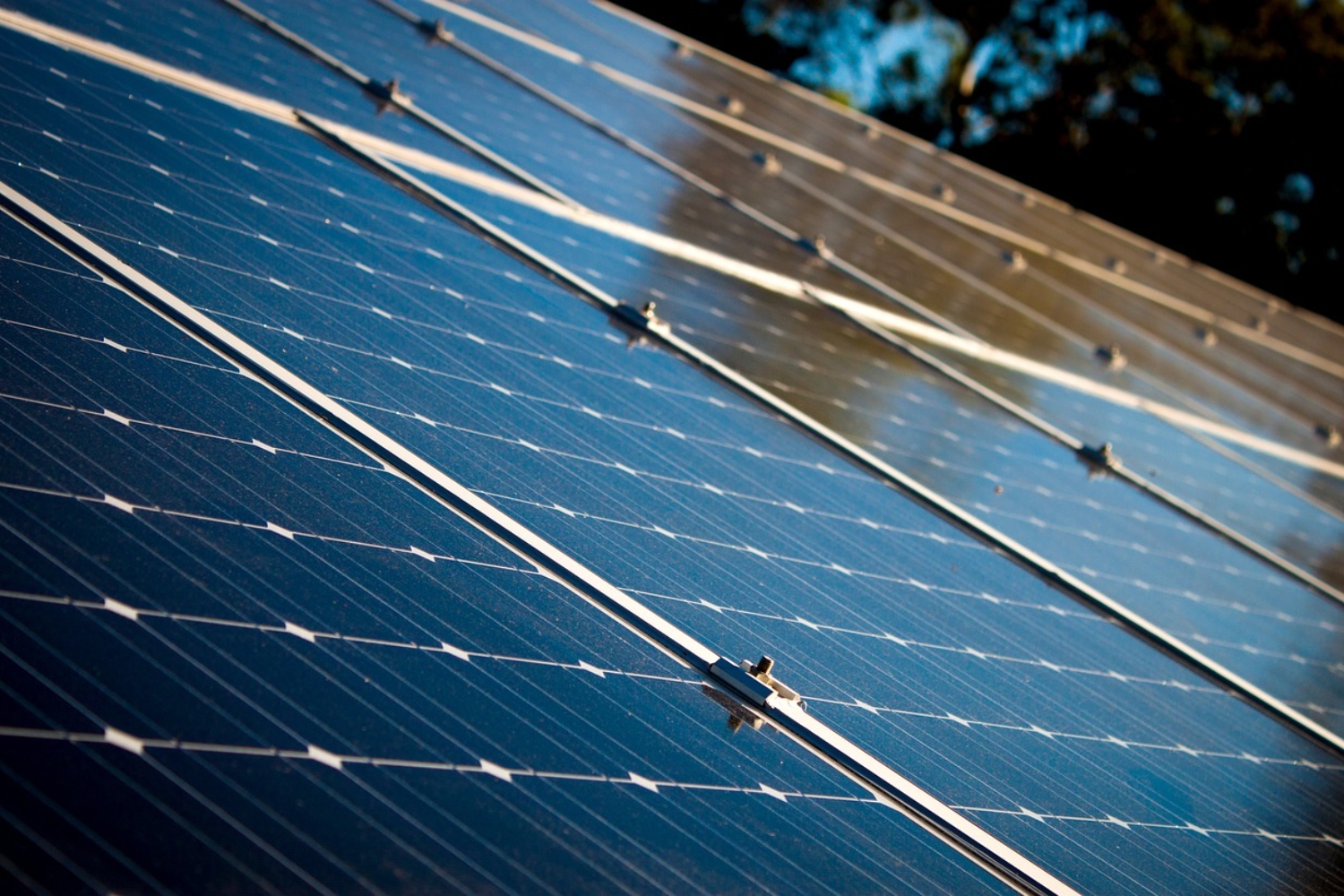Pennsylvania Reaches Solar Milestone With Ability to Power Residents With In-State Solar
Pennsylvania Reaches Solar Milestone With Ability to Power Residents With In-State Solar exploreJeffersonPA.com


HARRISBURG, Pa.
 The Pennsylvania Department of Environmental Protection (DEP) and the Pennsylvania Public Utility Commission (PUC) announced on Tuesday that the Commonwealth’s Alternative Energy Portfolio Standards (AEPS) program has surpassed one gigawatt (GW) or 1,000 megawatts (MW) of solar energy.
The Pennsylvania Department of Environmental Protection (DEP) and the Pennsylvania Public Utility Commission (PUC) announced on Tuesday that the Commonwealth’s Alternative Energy Portfolio Standards (AEPS) program has surpassed one gigawatt (GW) or 1,000 megawatts (MW) of solar energy.
Introduction
This report highlights the achievement of the Pennsylvania Department of Environmental Protection (DEP) and the Pennsylvania Public Utility Commission (PUC) in surpassing one gigawatt (GW) or 1,000 megawatts (MW) of solar energy through the Commonwealth’s Alternative Energy Portfolio Standards (AEPS) program. The article emphasizes the significance of this milestone in relation to the Sustainable Development Goals (SDGs) and discusses the impact of solar energy on Pennsylvania’s energy landscape.
Sustainable Development Goals
- Goal 7: Affordable and Clean Energy
- Goal 11: Sustainable Cities and Communities
- Goal 13: Climate Action
Milestone Achievement
The achievement of surpassing one gigawatt (GW) or 1,000 megawatts (MW) of solar energy in Pennsylvania is a significant milestone that solidifies the state’s position as an energy leader and promotes innovation in diverse energy technologies.
Statement from DEP Interim Acting Secretary
DEP Interim Acting Secretary Jessica Shirley stated, “Clean, renewable solar energy is so important for Pennsylvania’s air quality and reaching one gigawatt is proof that we are making progress towards Pennsylvania’s Solar Future. The Shapiro Administration will continue advancing an energy policy that ensures a diverse and reliable ecosystem of energy resources and that protects the environment, creates jobs, and protects consumers. At the rate of solar development currently in our Commonwealth, I’m looking forward to reaching our second gigawatt in a fraction of the time.”
Impact on Energy Consumption
The current one gigawatt (1,000,000,000 watts) of installed solar generation in Pennsylvania is enough to power nearly 140,000 homes, equivalent to the number of households in a city the size of Pittsburgh. The additional solar projects under construction across the Commonwealth will further contribute to the energy needs of residential populations in cities like Altoona, Harrisburg, Scranton, and West Chester.
Role of AEPS
Pennsylvania’s leadership in renewable energy began with the creation of the AEPS program two decades ago. The successful achievement of the goals outlined in the legislation has paved the way for this solar milestone. Governor Shapiro supports revising the AEPS to continue promoting a diverse range of generation sources, including ongoing investment in solar energy.
Growth of Solar Projects
The number of new solar projects being installed in Pennsylvania has grown by 160 percent over the past five years. Despite challenges such as the global pandemic and supply chain issues, the capacity of new systems coming online has doubled. This growth is driven by small rooftop solar systems on homes and businesses, as well as larger utility-scale solar systems connected to the power transmission grid.
Cost Reduction and Future Opportunities
Investment in emerging technologies has significantly reduced the cost of solar and other advanced generation solutions over the last two decades. Solar energy has become an affordable and often the cheapest energy resource to build. This trend opens up opportunities for further diversification of Pennsylvania’s generation fleet.
Future Solar Capacity
In addition to the one gigawatt of installed solar power, an additional 550 megawatts (or just over half a gigawatt) is currently under construction across the state. These projects are expected to be operational by this summer, further contributing to Pennsylvania’s solar capacity.
Statement from DEP’s Energy Programs Office Director
David Althoff, Director of DEP’s Energy Programs Office, expressed his optimism about the growth of solar energy in Pennsylvania. He stated, “The promise of solar is being realized across Pennsylvania. It’s encouraging that this zero-emission energy source is becoming a major contributor to our energy mix and will only continue to grow in popularity.”
AEPS Program
The AEPS program, administered by the PUC in collaboration with DEP, was established in 2005. It requires that 18 percent of electric power provided through retail sale in Pennsylvania comes from qualified alternative and renewable energy sources. This program has played a crucial role in reducing pollution and greenhouse gas emissions by promoting the deployment of renewable and alternative energy technologies.
Additional Information
- Renewable Energy section of the PUC website
- AEPS section of the PUC website
- AEPS program website
- Pennsylvania Department of Environmental Protection’s website
Conclusion
The achievement of surpassing one gigawatt of solar energy in Pennsylvania through the AE
SDGs, Targets, and Indicators in the Article
1. Which SDGs are addressed or connected to the issues highlighted in the article?
- SDG 7: Affordable and Clean Energy
- SDG 13: Climate Action
- SDG 11: Sustainable Cities and Communities
The article discusses the Pennsylvania Department of Environmental Protection (DEP) and the Pennsylvania Public Utility Commission (PUC) surpassing one gigawatt of solar energy in the state. This achievement is connected to SDG 7, which aims to ensure access to affordable, reliable, sustainable, and modern energy for all. It also contributes to SDG 13 by promoting clean energy sources and reducing greenhouse gas emissions. Additionally, the article mentions that the solar energy will be enough to power nearly 140,000 homes, highlighting its relevance to SDG 11, which focuses on making cities and human settlements inclusive, safe, resilient, and sustainable.
2. What specific targets under those SDGs can be identified based on the article’s content?
- SDG 7.2: Increase substantially the share of renewable energy in the global energy mix.
- SDG 13.2: Integrate climate change measures into national policies, strategies, and planning.
- SDG 11.6: Reduce the adverse per capita environmental impact of cities, including by paying special attention to air quality and municipal and other waste management.
The article highlights the achievement of surpassing one gigawatt of solar energy in Pennsylvania, indicating progress towards increasing the share of renewable energy in the state’s energy mix (SDG 7.2). It also mentions the importance of solar energy for improving air quality, which aligns with the target of reducing the adverse per capita environmental impact of cities (SDG 11.6). Additionally, the article emphasizes the role of solar energy in reducing greenhouse gas emissions, indicating integration of climate change measures into energy policies (SDG 13.2).
3. Are there any indicators mentioned or implied in the article that can be used to measure progress towards the identified targets?
- Installed solar generation capacity (in gigawatts or megawatts)
- Number of homes powered by solar energy
- Additional solar capacity under construction
The article mentions that Pennsylvania has surpassed one gigawatt (1,000 megawatts) of installed solar generation capacity, which serves as an indicator of progress towards increasing the share of renewable energy in the state’s energy mix (SDG 7.2). It also states that the installed solar generation is enough to power nearly 140,000 homes, providing an indicator of the number of households benefiting from solar energy. The article further mentions that an additional 550 megawatts of solar power is currently under construction, indicating future progress in expanding renewable energy capacity.
Table: SDGs, Targets, and Indicators
| SDGs | Targets | Indicators |
|---|---|---|
| SDG 7: Affordable and Clean Energy | Increase substantially the share of renewable energy in the global energy mix (7.2) | Installed solar generation capacity (in gigawatts or megawatts) |
| SDG 13: Climate Action | Integrate climate change measures into national policies, strategies, and planning (13.2) | Installed solar generation capacity (in gigawatts or megawatts) |
| Reduce greenhouse gas emissions (not explicitly mentioned in the article) | N/A | |
| SDG 11: Sustainable Cities and Communities | Reduce the adverse per capita environmental impact of cities, including by paying special attention to air quality and municipal and other waste management (11.6) | Number of homes powered by solar energy |
Behold! This splendid article springs forth from the wellspring of knowledge, shaped by a wondrous proprietary AI technology that delved into a vast ocean of data, illuminating the path towards the Sustainable Development Goals. Remember that all rights are reserved by SDG Investors LLC, empowering us to champion progress together.
Source: explorejeffersonpa.com

Join us, as fellow seekers of change, on a transformative journey at https://sdgtalks.ai/welcome, where you can become a member and actively contribute to shaping a brighter future.







